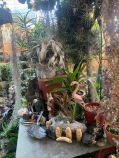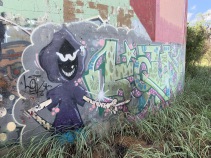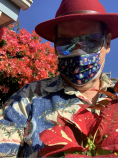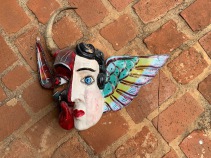Introduction
1. Body Schema as the Invisible Organ of Presence
The body schema is a pre-reflective, adaptive structure—a shifting internal “ghost map” that allows us to orient, move, and act without conscious calculation.
It’s not what the body is, but what the body knows how to be.
In terms of presence, the body schema is the infrastructure that lets presence happen without strain. When someone “has presence” in a room, part of what we’re sensing is the integrity and coherence of their schema—how fully their unconscious body-map is attuned to its surroundings and to others.
In traditional healing systems, this might be described as the body spirit—an animating force that both is and is not the physical form, capable of wandering, being strengthened, repaired, or called back. The healer’s work is often to restore the congruence between the body spirit and the living body—very close to what Phase 5 can do when the practitioner helps a client re-inhabit disowned or “thin” parts of their body schema.
2. Phase 5 and the Re-spiriting of the Body
In Ortho-Bionomy, Phase 5 shifts us from the mechanical and positional work of earlier phases into the field of attuned awareness—small gestures, micro-movements, and changes in tone
that arise as the body senses itself being noticed.
Here, the practitioner’s presence is part of the intervention.
Phase 5 could be described as listening with the whole body to the whole body—practitioner and client alike. When done well, it can recall the body spirit to parts of the self that have gone “cold” or “blank,” much as indigenous healers describe calling back a lost soul-fragment.
3. Hauntology and the Body Spirit
Derrida’s hauntology gives us language for the way absence and presence co-exist.
The body schema is, in a sense, already hauntological—an ever-present non-object that shapes action but cannot be fully objectified.
When trauma, injury, or neglect alters the schema, the body spirit can feel “out of phase” with the physical body, like an echo that’s lost sync with the voice. This mismatch is a kind of haunting:
- Movements carry the memory of other times.
- Gestures are shaped by ghosts—postures from a vanished past.
- The present body is inhabited by other presences (its own past forms, the modeled bodies of others).
Phase 5, in this light, becomes a practice of re-synchronizing the ghost and the body—bringing the wanton ghost of the living body back into intimacy with its flesh.
4. Presence as the Confluence of Body, Ghost, and Relation
True presence is not just “being in the moment.” It’s when the living body, its schema, and its spirit are in accord—and in responsive
relation to the world.
In traditional terms, this is the person whose body spirit is at home. In hauntological terms, it is the one whose ghosts are dancing in time with the living. In Ortho-Bionomy terms, it’s the client
in whom reflexive self-correction is free to happen because nothing in them is “pulling away” from the present.
If we wanted a single working sentence for all this, it might be:
Presence arises when the body, its ghost, and its spirit are in conversation—when the schema is neither lost in the past nor estranged from the flesh, but is free to respond in the living now.
Moods and Modes of the Body Schema
Indicative Mood ↔ Default Body Schema
- Grammar: The indicative presents things “as they are,” factually or descriptively.
- Body Schema: This corresponds to the baseline mode of body schema—the quiet, background organization that lets you walk, reach, sit, and inhabit the world without thinking about it.
- Tone: Matter-of-fact presence. The body schema in its everyday, unmarked operation.
Imperative Mood ↔ Directive / Adaptive Mode
- Grammar: The imperative issues commands or invitations: “Do this!” “Come here.”
- Body Schema: The schema’s adaptive mode—mobilizing quickly to meet demands. Think reflexes, postural adjustments, the sudden recalibration when you step onto uneven ground.
- Tone: Urgent, orienting. The body schema takes charge, issues orders to muscles and joints.
Subjunctive Mood ↔ Imaginal / Exploratory Mode
- Grammar: The subjunctive opens the “as-if” space: “If this were so…” “May it be that…”
- Body Schema: The schema’s exploratory / anticipatory mode—where micro-movements, gestures, and possibilities are sensed but not yet enacted. This is central to Phase 5: tiny impulses, tentative reaches, the ghost of a movement.
- Tone: Wanton, playful, liminal. The body schema here is closer to what you called the wanton ghost of the living body.
Interrogative Mood ↔ Orienting / Seeking Body Schema Mode
Grammar:
The interrogative mood frames language as a question: “What is that?” “Where are we going?” “Could this be true?”
It’s not commanding or imagining—it’s asking.
Its function is to open a space, draw attention, seek information, invite response.
Body Schema:
The corresponding body schema mode is orienting and seeking—the body that turns toward, perks up, tilts its head, pauses in readiness.
It’s the mode where the body says: “Hmm?”
It can be subtle—an eye movement, a shift in weight, a pause before acting.
In many traditional healing practices, this mode is what allows the body spirit to notice what is missing or misaligned.
Qualities of This Mode:
- Head tilt / gaze shift
- Micro-pauses before action
- Weight shifts to sense balance or direction
- Heightened proprioceptive curiosity (“Where am I in space? What’s over there?”)
This mode is incredibly important in Phase 5 work, because:
- It’s often the first movement toward change—before the “as if” of the subjunctive, the body says “what if?”
- It’s how both practitioner and client locate each other in the shared field: Where is the conversation happening? Where does the body want to go next?
Why this Comparison Matters
- It shows that the body schema, like language, operates in modes of relation rather than fixed states.
- It lets us understand Phase 5 as opening the subjunctive body—the body of “what if,” “may be,” and “perhaps,” rather than the body of command (imperative) or description (indicative).
- It links back to traditional notions of body spirit: often, healing practices engage the subjunctive—acting as if the spirit is called back, as if balance is restored.
?️ The Four Grammatical Moods and Their Somatic Counterparts
|
Grammatical Mood |
Function in Language |
Body Schema Mode |
Somatic Qualities |
|
Indicative |
States what is |
Baseline / Habitual Mode |
Coherent orientation in the world. Default tone. Postural facticity. “This is my body.” |
|
Imperative |
Directs what must be done |
Adaptive / Directive Mode |
Mobilization. Reflexive adjustment. Goal-directed efficiency. “Do this now.” |
|
Subjunctive |
Imagines what might be or could be |
Imaginal / Anticipatory Mode |
Gestural beginnings. Unfinished motion. “As if…” Possibility. Phase 5 territory. |
|
Inquisitive (Interrogative) |
Asks is it so?, what if? |
Exploratory / Relational Mode |
Somatic curiosity. Turning toward. Testing the edge. Seeking response. “Is this it?” |





